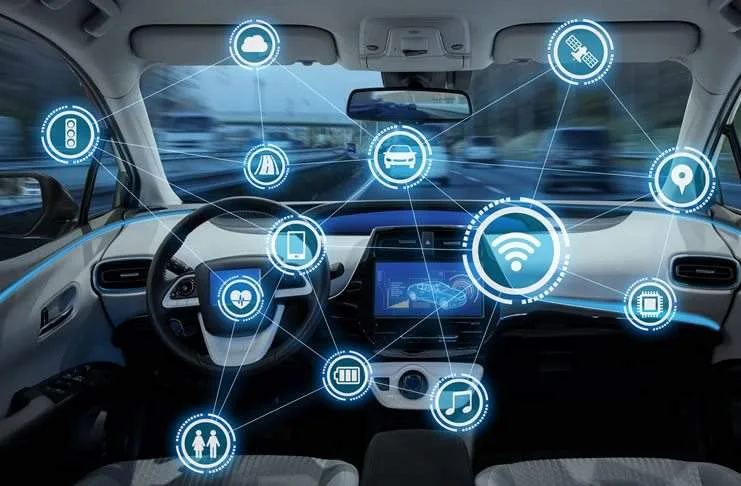Telematics, traffic and vehicle technology. What you need to know.
Telematics encompasses a broad range of studies which are concerned with using information technology to improve fleet management and to gather accurate data for a wide range of purposes, including real-time tracking of vehicles and people. Telematics refers to the application of technology to the collection, analysis, administration, and distribution of data and has emerged as a crucial research area in many industries. Telematics consists of different areas of study including traffic management, tracking, and fleet maintenance and tracking. Some of the applications in telematics include vehicle telematics, which deals with tracking and diagnostics of various automotive and telecommunication devices installed in vehicles.
Telematics systems are designed to collect detailed data on GPS signals, in order to determine the fuel consumption and efficiency of a vehicle. These systems provide a complete history of the fuel consumption history of vehicles and allow maintenance departments to make informed decisions when it comes to servicing vehicles. Maintenance departments can determine which parts of the vehicle need maintenance and can track repair visits and parts replacement, as well as preventative maintenance visits. As well, the system provides repair estimates as part of a company’s preventive maintenance program.
Traffic Telematics Systems
Telematics systems have been developed for a variety of reasons, ranging from civil defense siding to mining operations, and even to protect human rights activists in abusive environments. The main use for traffic control and management is that of public safety by assuring that traffic flow is not hampered, and that routes are clear for emergency vehicles, pedestrians and other emergency situations. There are three main types of traffic telematics systems; direct detection, ABB Instantaneous Information Bureau (IIA), and real-time traffic information overlays.
Direct detection systems are based on algorithms to detect heavy vehicle traffic based on patterns of vehicles. These systems can distinguish between trucks and buses, automobiles and tractors. Traffic through highways is monitored at regular intervals using these algorithms to determine the number and types of trucks and buses present, the speed they are traveling at and the route they are taking. These traffic telematics systems are usually state-of-the-art and provide detailed reports on traffic conditions within cities or metropolitan areas.
GPS tracking
GPS tracker can be installed in all cars to detect vehicle position accurately. By doing so, you can manage your fleet better. You can use dash-mounted or wireless GPS trackers to monitor positions and speed. This helps in proper evaluation of routes, fuel consumption, driver efficiency and overall fleet management. By using such devices, you can determine the areas which are experiencing the greatest traffic flow. This then proves to be beneficial as it helps you to plan routes for improved fuel economy.
Speed monitoring
Speed monitoring can prove beneficial for optimizing fleet transport. By setting specific goals, you can monitor the progress of vehicles. You can set benchmarks for both maximum speed and vehicle kilometers per hour. Once you get a clear picture of your driver’s efficiency, you can fine tune the driving process so that improvements are noticed.
Traffic Management
Traffic management is made easy with GPS vehicle trackers. GPS is an advanced technology designed specifically for navigation, mapping and scheduling. GPS trackers can be fixed to vehicles or can be installed in the cars themselves. You can program them with detailed reports or simply store data in removable disks. GPS trackers come with built-in proprietary software that makes it easy for you to use the system for management.
Traffic Technology
Traffic technology has been instrumental in reducing freight costs as well as improving fleet efficiency. With the advent of such technologies, it has become much easier to monitor the movement of vehicles. GPS trackers can easily alert you when the car is going astray or when it is being abused. In the case of vehicle abuse, you can choose to send out police to the scene, which can be extremely beneficial especially in cases where the driver was under the influence of drugs or alcohol.
Traffic Management
Managing traffic efficiently is a tough job. It requires patience, thorough planning, effective deployment and efficient monitoring. Today, there is a variety of computer hardware and software that make managing traffic much simpler. Traffic management companies can be contracted to do the job on your behalf. Traffic management companies typically maintain business relationships with several clients. This allows them to coordinate with each other to effectively manage fleet inventories, driver records, fuel consumption, route management and tracking systems among others.
Fleet Management Systems
Fleet management systems are software-based products that give fleet managers a real-time overview of the running condition of their fleet. Such systems are designed for both small and large fleets. Some of these software products are available at no cost to the buyer, while some are available with a minimal fee. Software systems that require an in-house installation are also available for those who may not have the technical expertise for such a task.
One of the most important features of fleet management systems is the ability to provide visibility into the data captured during vehicle stops. The vehicles are usually monitored by RFID technology, which can be read by the system. The information gathered by the readers and the software programs can then be sent to a central control station through the internet or other communication protocols. When a problem occurs within one vehicle in the fleet, all the vehicles can be checked using the centralized system.
Vehicle Management Software
Vehicle Management Software is an application used for fleet and transportation management. It provides real time information on vehicle availability, driver payroll, fuel efficiency, repair status etc. It also enables you to schedule and reschedule vehicles on time and reduce costs involved in transportation. The benefits of this application are high when it comes to operational cost, reduction in cost of operation and also increase efficiency. The software can help you in decision making in regards to vehicle usage, driver management and also provide preventive maintenance and repairing services.
With efficient vehicle maintenance the fuel consumption of your vehicle’s can be reduced and it can help in saving the resources involved. Vehicle/ Fleet Management Software reduces operating costs and boost profits by optimizing operational efficiency with technologically advanced vehicle maintenance support. It also has features like insurance, for fleet manager, vehicle health reports and vehicle repair status. It also provides multiple dispatch of driver and dispatch of vehicle on call, which can save your time and money.
If you own a fleet of vehicles and want to minimize the time taken for maintenance, dispatch, repairing and idling of vehicles, you can consider a Vehicle Management Software. This software can help you in all these activities and can even optimise the benefits of automation system for vehicles. It will help in keeping a check on vehicle maintenance, service timings, fuel consumption, driver scheduling, repairing status etc and many other aspects. This software is designed in such a way so that it can reduce unnecessary actions and make the work easier.
IT solutions
Today, all kinds of IT solutions are available to help you run your business more efficiently. Traffic technology makes it possible for car owners and fleet managers to manage fleet vehicles, routes, maintenance records and tracking systems with the assistance of an efficient and easy-to-use interface. Traffic technology solutions are also vital in ensuring customer satisfaction. For example, if you are managing a business and multiple people drive into the same parking lot at the same time, it can quickly become confusing and chaotic. With the help of an interface and a database, all these different people can be categorized into different groups.
Efficiency
When it comes to maintaining efficient traffic management, you need to ensure that you have the right kind of technology in place. An interface is just the first step. You also need to monitor the system itself to ensure that everything is running smoothly and efficiently. The next step is to properly deploy the system and ensure that you have good management and oversight. The last step is to regularly upgrade your system so that you can ensure that everything is running in tip-top shape
Telematics in Australia
The term telematics has been coined to combine the words telecommunication and mathematics. Telematics refers to the compilation and analysis of data regarding mobile or remote assets. Telematics also refers to the use of information regarding things like the distribution networks and the Internet of things. It is considered one of the fastest growing industries in the world, and it provides an up to date method of tracking devices, people and products from remote locations.
Australia has been actively participating in the technology as the automotive industry looks to improve the efficiency of their manufacturing processes and reduce costs associated with doing so. In 2021, the Federal government announced a $40 million program for research into the development of new and more efficient vehicle telematics systems. This was a response to a recent report by an international team which concluded that telematics systems were dangerous and could pose a serious safety issue if they were not developed properly and implemented. The Federal government has since then invested further resources in this area with the creation of several working groups, each led by an individual member of government to develop further enhancements to the existing telematics technology.
As most governments in developed countries are now heavily relying on telematics systems to monitor their citizens, it is no surprise that telematics in Australia has also begun to grow at a significant rate. The Federal government’s initiative seeks to foster greater efficiency within the automotive industry by reducing the costs associated with maintenance, diagnosing and developing preventive maintenance plans. This type of software is used to monitor both mechanical and technical aspects of vehicles, and is designed to give fleet managers an accurate picture of problems in real time. Fleet management involves the process of maximising the productivity of each vehicle by carefully monitoring fuel consumption, driver behaviour and other factors. It is estimated that telematics software can save fleet managers up to 40 per cent in fuel costs annually.
Telematics and IoT | Internet Of Things
The IoT sector is growing rapidly and there has been immense progress in every area of technology over the last decade. From consumer products to automobiles, everything has been transformed through the help of IOT devices and software. There is no IOT product or technology that is not at least partially connected to the Internet and especially the ubiquitous Bluetooth market. Telematics has got an integrated solution across a variety of industries today from automotive accessories to mobile phones and from health care to transport systems.
Telematics has a unique expertise in delivering telematics services in an array of industries today. With over $15 billion spent on automotive accessories annually, the telecoms and automotive industry are one of the largest consumers of IOT technology solutions and continues to invest heavily in this growing market. With a huge demand for solutions and a strong industry presence, IOT solutions have been instrumental in improving the efficiency of automotive telematics systems by automating functions that were previously handled only by professionals.
From tracking vehicle maintenance logs and scheduled oil changes to calculating fuel consumption and mileage, IOT products have made a significant impact in both the automotive industry and the commercial sector. From improving fleet management by enabling companies to track their assets and manage them remotely, to reducing costs and improving customer service by making it possible to service fleet vehicles remotely, IOT has emerged as a key enabler in every area of technology transfer and improvement. While the automotive industry is the largest consumer of IOT technologies, the commercial sector has also begun investing heavily in IOT solutions to reduce operational costs. From improving fleet management to simplifying communication between drivers and fleet managers, IOT has created an ‘IoT’ platform across different industries and has become an integral part of each industry’s daily operations.
Artificial intelligence (AI)
AI traffic telematics systems are designed to meet the traffic control needs of a wide variety of industries, including the oil and gas, transportation, communications, petroleum, chemical, power, and utility companies. This technology also helps other industries, such as the airline and trucking industry, reduce their costs and increase their productivity.
Artificial intelligence (AI) once the preserve of elite IT departments only, is now slowly seeping into all daily experiences. From credit decisions to movie choices to instant meal recommendations, AI is impacting almost every area of your life, whether or not you realize it. From transportation management to traffic management, from e-commerce to fleet management, AI is quickly and steadily changing the way we live. Whether we like it or not, artificial intelligence is here to stay.
In order for vehicles to drive safely and effectively, they must be properly equipped with sensors that can detect hazards, traffic conditions, and other drivers around them. However, the problem with drivers operating such large vehicles, in large spaces is that they are not always fully aware of what is going on around them. As such, the result is often a series of uneventful, but slow moving vehicles, with nothing to do with what the vehicle’s computers are reading. This is where artificial intelligence comes into play. By allowing AI to monitor the vehicles in real time, fleet managers have the ability to accurately communicate with their drivers.
Additionally, by having access to real time data and navigation systems, fleet managers are able to more precisely plan routes and prepare their employees for the journey ahead. The maps and navigation information that they are provided can help drivers avoid potentially dangerous situations, prepare their drivers for peak traffic times, and ultimately ensure that their vehicles arrive at their destinations on time. With the accuracy and speed of this new technology, it is clearly clear that artificial intelligence is quickly altering the way that drivers and their companies interact with one another. As more businesses to invest in the technology, it is clear that the future of transportation will be defined by artificial intelligence.
Summary
The advancement of traffic technology has meant a new way of managing fleets of vehicles. With the help of such innovations, fleet managers can now optimize their resources without having to face tedious procedures and reports. It has become easier for them to monitor the activities of drivers on the road.
Vehicle telematics can be used to monitor and diagnose several problems in vehicles such as brake failure, engine damage, tire wear, and overall vehicle condition. In the past, telematics was designed to monitor vehicle conditions in gated communities such as golf courses. However, with advances in technology, telematics can be applied in any industrial setting, such as manufacturing plants and delivery services. Telematics systems have now been integrated into many different types of car software programs. This allows companies to create vehicle packages that include fuel efficiency estimates, driver and rider information, car alarm activation and more.







